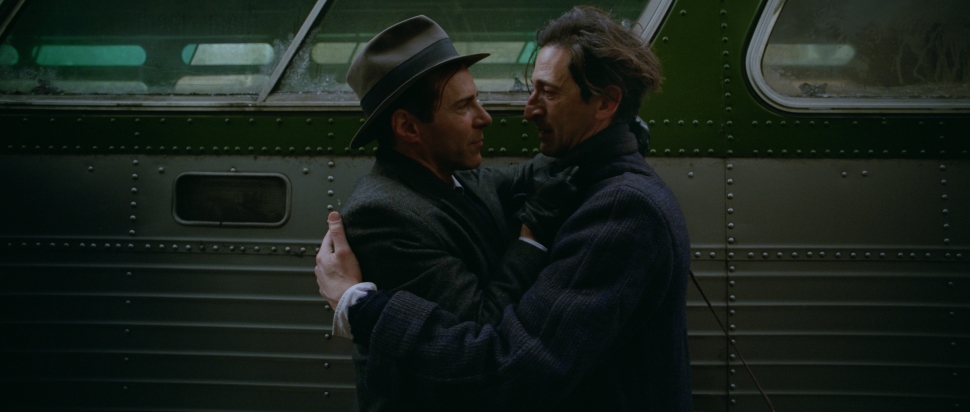The Brutalist
Adrien Brody gives a career-best performance as a visionary architect whose talents are exploited by Guy Pearce's ruthless tycoon in this towering meditation on the American Dream from Brady Corbet
What is it about Brutalist architecture that makes it look so bleak yet awe-inspiring? Emerging in the 1950s, the imposing geometric shapes and rough concrete textures of Brutalism were designed to be egalitarian. Rooted in principles that emphasised functionality and social purpose over traditional aesthetics, these buildings symbolised a time when social mobility was seen as a right rather than an aspiration. However, decades of neglect have turned these bold structures into crumbling monuments of a future that never materialised. In The Brutalist, Brady Corbet takes this metaphor and uses it to explore the disillusionment faced by immigrants pursuing the American Dream.
Following the chilly formalism of The Childhood of a Leader and the pop-star operatics of Vox Lux, Corbet’s latest completes a trilogy of films about power and spectacle. The film follows László Toth (Adrien Brody, delivering a career-best performance), a Jewish, Bauhaus-trained architect who flees the wreckage of war-torn Europe for the promise of a new life in America. We first encounter him during a long, claustrophobic close-up – soundtracked by Daniel Blumberg’s rousing, yet strangely disorientating score – as he fights his way through the dark, crowded passageways of a passenger ship, before emerging on deck to witness a view of the Statue of Liberty. However, his elation is quickly extinguished when he arrives in Pennsylvania to work at his cousin’s (Alessandro Nivola) furniture store.
Clocking in at around three-and-a-half hours (including an overture and an intermission) and shot using the VistaVision widescreen format, The Brutalist displays the scope and vastness of a Le Corbusier highrise. The ambitious approach allows Corbet to dig deep into the psychological strangeness of the immigrant experience, and the exploitative dynamics of capitalism inherent to the American Dream. László encounters this systemic cruelty firsthand when he and his cousin are contracted to revamp the library of wealthy industrialist Harrison Lee Van Buren (played with villainous aplomb by Guy Pearce). Van Buren initially rejects László’s modernist design, and refuses to pay for the work. But later, upon learning that László is a celebrated architect, he employs him to build a community centre to honour his recently departed mother.
The project allows László to finally bring his wife, Erzsébet (Felicity Jones), and niece, Zsófia (Raffey Cassidy), to America, but it also makes him a slave to Van Buren’s whims. Named after the Hungarian-born geologist who shocked the world when he took a hammer to Michelangelo’s Pietà, László struggles to balance his radical, Bauhaus-inspired vision with Van Buren’s conservative expectations, with disputes over money and creative control eventually driving the architect to the brink of madness.
As the film unfolds, Corbet juxtaposes László’s struggles with broader historical currents, including a pivotal sequence that pairs his first American project with David Ben-Gurion’s declaration of Israeli independence, with Corbet challenging audiences to consider how the pursuit of a new homeland can often come at the cost of others’ exclusion and suffering. A towering meditation on how dreams are both pursued and exploited, The Brutalist cements Corbet’s place among cinema’s most ambitious new voices.
Released 24 Jan by Universal; certificate 18
